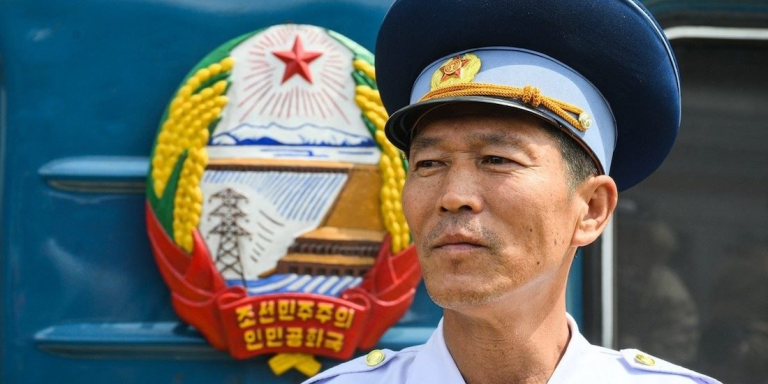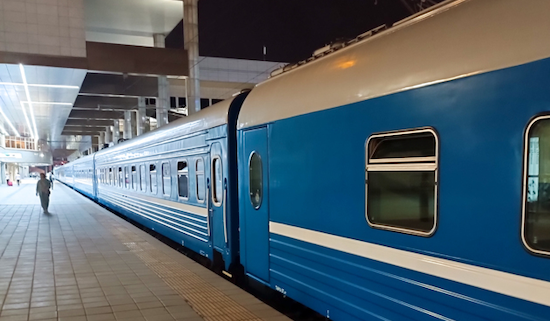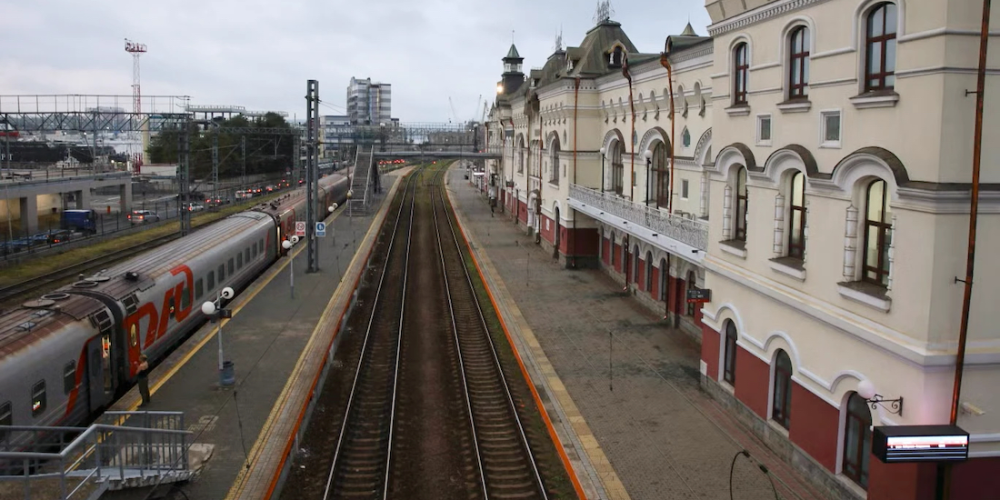
Historic Train Service Restarts as North Korea and Russia Showcase Deepening Cooperation
New York, N.Y. — For the first time in five years, a direct train from Pyongyang arrived in Moscow, marking the revival of a symbolic rail link between the two capitals.
The service, suspended since February 2020 due to the COVID-19 pandemic, resumed earlier this month after Russian Railways announced its reinstatement.

The 10,000-kilometer journey—the world’s longest direct rail route—takes eight days, traversing the vast expanse of the Trans-Siberian Railway.
The arrival of the train at Yaroslavsky Station on Wednesday, though an hour behind schedule, signaled a potential rekindling of diplomatic and economic ties between North Korea and Russia.
Notably, only one carriage was from North Korea, attached to a Russian train, and carried no passengers, suggesting the trip was a test run.
No formal ceremony accompanied the event, but the quiet resumption speaks volumes about the nations’ strategic priorities.
A Route Steeped in Geopolitical Significance
The revival of the Pyongyang-Moscow rail link comes amid heightened global scrutiny of Russia and North Korea’s deepening partnership. Analysts suggest the move is more than logistical—it’s a political statement. Both nations, facing Western sanctions, appear eager to demonstrate their resilience and mutual support.
“This isn’t just about transportation,” said Dr. Elena Mikhailova, a Eurasian affairs expert at the Moscow State Institute of International Relations. “It’s a signal to the U.S. and its allies that Russia and North Korea are finding ways to circumvent isolation.”
Operational Details and Future Plans
According to Russian Railways, the service will operate twice monthly, facilitating both passenger and freight transport. The Trans-Siberian Railway, a critical artery for Russia’s economy, now extends its reach to North Korea, potentially opening new trade avenues.
However, the practicality of the route remains uncertain. With an eight-day journey and limited initial demand, some question its viability. “It’s more symbolic than functional right now,” admitted a Russian logistics official, speaking anonymously. “But if sanctions persist, this corridor could become vital.”

Quiet Arrival, Loud Implications
The subdued arrival of the train contrasted with its geopolitical weight. Only a handful of conductors disembarked, briefly engaging with Russian media before departing. The absence of fanfare suggests both nations are cautiously testing the waters.
Yet, the implications are clear. As Russia seeks allies amid its war in Ukraine, and North Korea pursues economic lifelines, the rail link could evolve into a strategic asset. Observers note that North Korean laborers or sanctioned goods might eventually traverse this route, though neither government has confirmed such plans.
What’s Next for the Rail Link?
While the first run carried no passengers, future trips may include diplomats, workers, or even tourists. The Kremlin has hinted at expanding people-to-people exchanges, though security concerns loom large. Meanwhile, South Korea and the U.S. are closely monitoring developments, wary of potential sanctions evasion.
For now, the train’s revival stands as a testament to the growing Moscow-Pyongyang axis—a partnership forged in defiance of Western pressure.
Pyongyang-Moscow Rail Link Resumes After Five-Year Pause (June 27, 2025)
Summary for Audio
After a five-year hiatus, a direct train from Pyongyang arrived in Moscow, resuming the world’s longest rail route. The 10,000-kilometer journey signals strengthened ties between Russia and North Korea amid Western sanctions. Though the first run carried no passengers, the service may soon facilitate trade and diplomacy, with two monthly round trips planned.
#NorthKorea #Russia #TransSiberianRailway #Geopolitics #Sanctions
Tags: North Korea-Russia relations,Trans-Siberian Railway,
economic sanctions, international rail travel, geopolitical alliances
